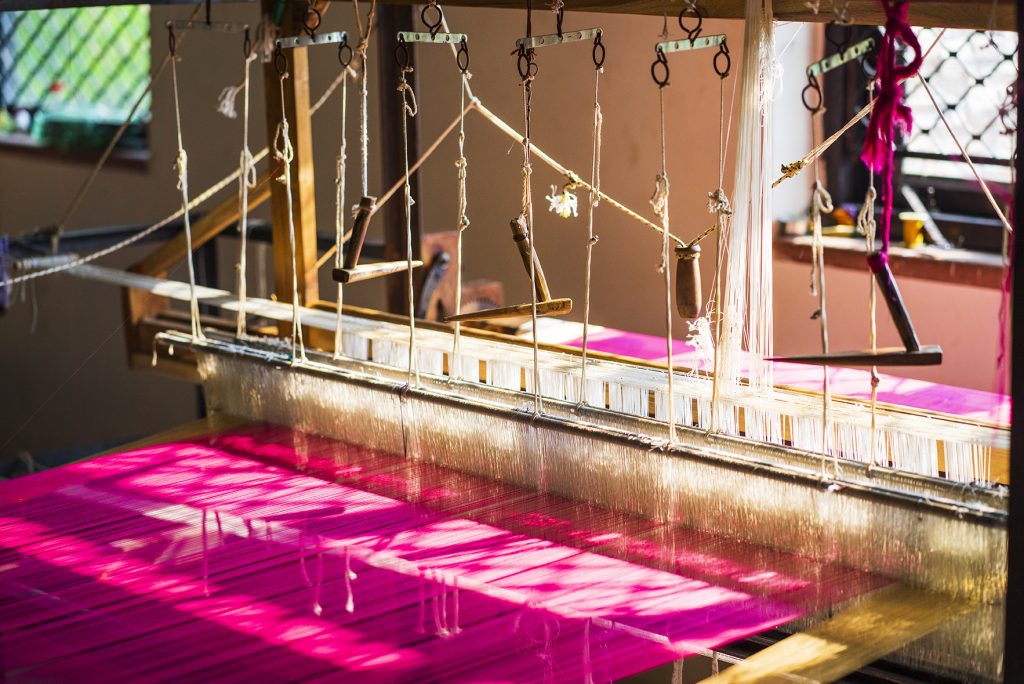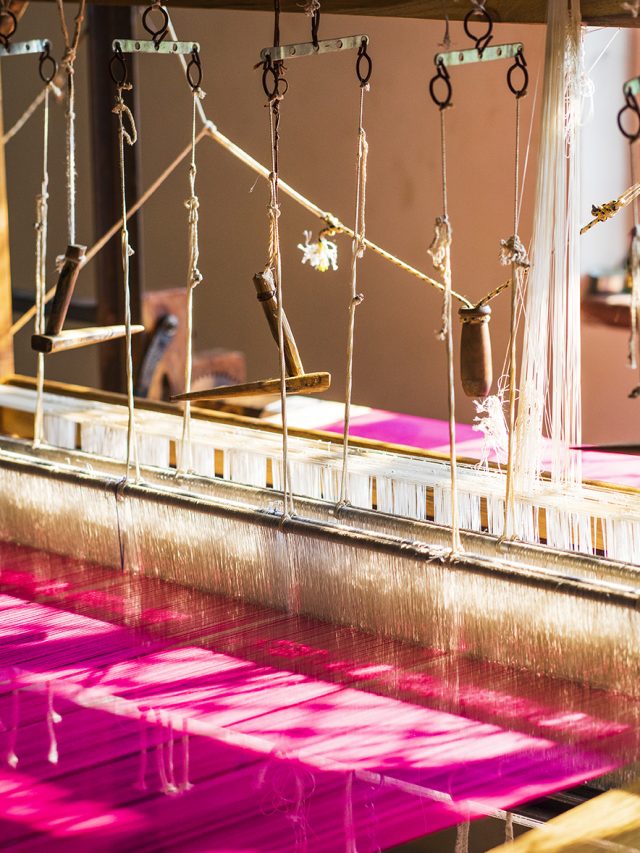INTRODUCTION
Madhya Pradesh has held a significant position in the realm of weaving, tracing its origins back to texts from the 7th and 12th centuries. This longstanding tradition of textile craftsmanship endures to this day. Around 1350, Koshti weavers, hailing from Jhansi, embarked on a migratory journey to Chanderi, where they eventually settled. However, it was during the Mughal era that the textile industry of Chanderi attained its zenith. Historical records attest to the fact that the fabrics woven in Chanderi even found their way to the court of the Mughal Emperor Akbar. In 1910, the Scindia royal family embraced Chanderi sarees, ushering in the era of the golden thread motif. Nonetheless, it was during the Mughal epoch that the ardour for this fabric reached its zenith. Across the nation, queens bedecked themselves in resplendent Chanderi silk ensembles for courtly gatherings and notable festivities. The 1930s marked a pivotal juncture as Chanderi weavers gained access to Japanese silk. Ingeniously, they began incorporating this silk into cotton saree warps. Additionally, they innovated by crafting a distinct silk-by-silk variation, a move that translated into enhanced profits for their craft.

The allure of Chanderi’s creations extended to numerous royal households, including those in Gwalior, Indore, Kolhapur, Baroda, and Nagpur. These exquisite textiles graced important occasions like childbirth and weddings within these noble families. Chanderi’s looms crafted an array of saris that impeccably suited the refined tastes of its distinguished clientele, spanning from the royalty of Gwalior, Baroda, and Nagpur to regions even beyond.
Chanderi Weaving Now
Nestled within Chanderi lies a tapestry of looms, predominantly congregated in an enclave known as ‘Bahar Shahar‘. In this district, the thoroughfares come alive with the rhythmic clatter of looms, each artisan proudly overseeing a minimum of 2 to 4 of these contraptions (culminating in an impressive total of over 3500 looms within this small township!). The artisans procure their raw materials from prominent merchants across India as well as far-flung corners like Japan, Korea, and China. These resources are meticulously fashioned into opulent Chanderi fabrics, emblematic of the town’s rich textile heritage.

Various Dimensions of Chanderi
Renowned for its delicate texture, lightweight demeanor, and opulent drapery, the traditional Indian fabric of Chanderi stands out. The Chanderi repertoire comprises primarily three variants: pure silk, silk-cotton blend, and Chanderi cotton. Notably, the motif landscape of Chanderi has undergone a marked evolution through time. Alongside timeless florals, elegant peacocks, and motifs reminiscent of ancient coins, the fabric now boasts contemporary geometric designs. The crafting of Chanderi fabric entails the skillful interweaving of silk and zari threads. This intricate process predominantly employs classic cotton yarns, culminating in a resplendent, shimmering, and textured masterpiece.
The Design Language of Chanderi
The motifs, known as buttis, adorning Chanderi silk and other fabric variations, are meticulously handwoven. Skilled artisans employ distinct needles for crafting various motifs on traditional handlooms. Among the array of captivating motifs gracing Chanderi fabric, notable ones include ‘Nalferma,’ ‘Chatai,’ ‘Dandidar,’ ‘Jangla,’ ‘Ashrafi,’ ‘Bundi,’ ‘Churi,’ and ‘Keri.’The unique translucence present in Chanderi fabric stems from a distinctive yarn attribute known as ‘Single Falture.’ This effect arises when the natural adhesive within the raw yarn remains unremoved, imparting a particular degree of luminosity and sheer quality to the eventual fabric. This exceptional characteristic is exclusive to Chanderi fabric alone, rendering it an even more coveted choice for both local enthusiasts and global patrons.

Chanderi’s Allure
In recent times, the collaboration between fashion designers and Chanderi weavers has led to the creation of trendy wardrobe staples. The fabric’s captivating sheer texture, finesse, and sheen have captivated the imaginative souls within the fashion realm. Esteemed designers like Rahul Mishra and Sanjay Garg have injected a dash of elegance into this fabric through their innovative creations. Today, the handloom fabric not only features traditional motifs but also showcases modern designs such as dresses, jackets, shrugs, and trench coats, reflecting a contemporary fusion of style.

Chanderi in the new age of Fashion. Courtesy:Outlookindia.com
From its ancient roots to the present day, Chanderi has woven a tale of excellence, where skilled artisans, intricate motifs, and the ethereal translucence of the fabric have converged to create a masterpiece. Through centuries of patronage, this craft has not only adorned royalty but has also seamlessly transitioned into the modern fashion landscape, captivating both local and global audiences.

Contributor






